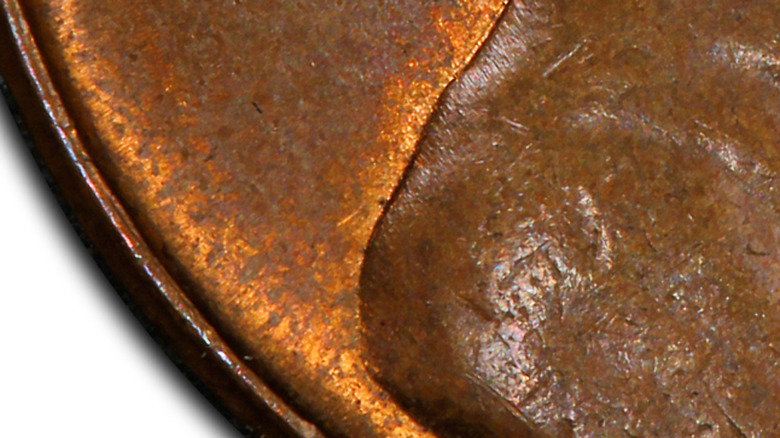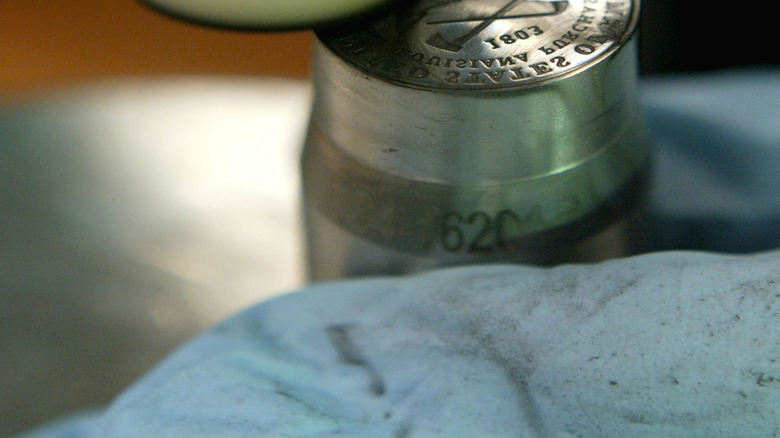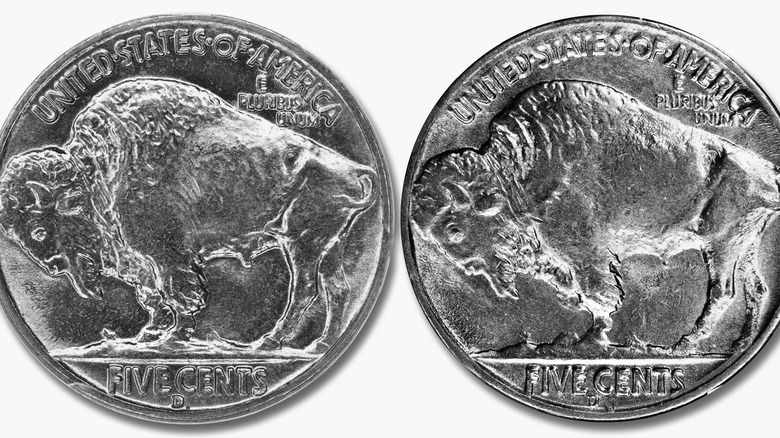Why Finding A 'Die Error' Coin Could Make You Richer
Everyone might dream of the day that they can get their money right, except for error coin collectors, who want to get their money wrong. While some valuable coins you might have lying around are prized for their age, beauty, and the finer materials they may be made of, others are prized because they are busted, in some key way.
Messed-up money can mean big money in the coin collecting world. If loving valuable defected money is wrong, error coin collectors don't want to be right — especially when it comes to "die-error" coins. Die error coins contain design elements that are thusly mussed due to errors in the die used to stamp coins with their obverse (heads) and reverse (tails) images.
This misprinted misfits aren't always easy to detect using the naked eye. However, with a little practice and a lot of research, you might be able to spot rare and valuable coins in your spare change — or at least become a die-hard die-error coin collector, yourself.
How die errors happen and the shapes they can take
Die errors happen as part of the minting process of a coin. Coins are "struck" when a die, or metal cone, is heated to high temps and then stamped onto blank coin metal, or a "planchet." The die bears the design elements of a coin, including images and text elements. If there is an error on the die itself, that error can be reproduced in the pressing of a coin.
For example, a die that has been misaligned during a coin's hubbing process can transfer a slightly doubled image onto a struck coin. This error creates a "doubled die" coin. Or, the die can clash with another die, rather than the planchet that is supposed to be placed in between striking dies. This is usually referred to as a "die clash" error.
Because coins are minted with the same dies until the point that those dies absolutely must be changed out, production can get creative with switching out certain design elements on the die, without totally changing the die. This means minute details like the last numeral on an issuance date, or a mint mark, might become "overdated," creating a sort of double exposed image on the final coin. Or, adjustments to an old die can result in coins missing their mint marks entirely.
Very valuable die error coins
Anything that makes a coin special or strange can make it sought after by collectors. Die errors can be worth bragging rights to error coin collectors, and a nice chunk of change to whoever sells such treasure.
For example, a very valuable and rare quarter from the 1930s is hunted for because of its doubled die status, as is a super expensive penny still in circulation. A rare dime missing its mint mark is worth a small fortune, as is the 1942 overdated dime, and a very rare Buffalo nickel with an intriguing die error.
Mistakes can really pay in coin collecting, but avoid making your own by perusing message boards and articles from industry-standard appraisers like NGC and PCGS. Familiarize yourself with common error coin fakes, so you don't buy up erroneously made "error" coin dupes and fall prey to the most fatal mistake in coin collecting: getting your hopes up over fool's gold — or in this case, fool's cupronickel.


